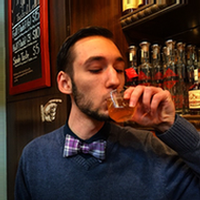Tardy Temperance Tuesday: Bittersweet Cocktails at Home (A Crash Course)
Dear Readers,
Over the past few months I have written about several of the non-alcoholic Bittersweet Cocktails that we serve in our Oxbow Tasting Salon and Bar Shop. Today, I am going to show you how to start creating your own Bittersweet Cocktails at home. Everything here is a rule of thumb, and there will almost certainly be exceptions to the rules. The important thing to remember is to have fun and to experiment!
The Framework
Every Bittersweet Cocktail has a basic framework to it, certain components that will always be there. These components are sweet, sour, bitter, and water.
Sweet
Every drink is going to have a sweet element. If at all possible avoid using refined sugar in your drinks. Examples of sweet components include demerara sugar, infused syrups, fresh muddled fruit, molasses, maple syrup, brown sugar or agave.
Sour
A sour flavor balances sweetness and is what makes a drink taste refreshing. The sour flavor is produced by one of several types of acids commonly found in food. Citric acid being the most common, as well as acetic acid (vinegars), tartaric acid (grapes), or malic acid (berries). Citrus juice is the most common sour component in cocktails, but various vinegars, and tart fruit juices also fill this role.
*note* Shrubs, also known as drinking vinegars, and tonic syrups, as well as sweetened lime juice, lime cordials, and sweet and sour mix fall into both the sweet and sour categories. With some being on the sweeter side (cordials, sweetened lime) and others on the more sour side (drinking vinegars, tonic syrups) with some being balanced in themselves. Experiment with these ingredients until you get it balanced the way you want.
Bitter
In non-alcoholic cocktails, bitters add a complexity that makes them as satisfying as a "real drink" as well as tempering the sugar. Bitters tend to play more of a forward role in the flavor profile of non-alcoholic drinks, and can even be the featured flavor in the drink. Feel free to use two or even three different bitters in one drink.
Water
Whether it’s sparkling, still, or flavored, you are going to need to dilute your drink to make it light and palatable.
Proper Proportions
Proportions are important in drink making, and will require some experimentation and practice to perfect, but here are some rules of thumb that have served me well:
In total you want between a 1:3 to 1:4 ratio of flavorings to water. So your sweet, sour, and bitter components should never equal more than 33% of the total volume of your drink.
In general, sweet and sour components should be in a 1:1 mix to stay balanced. If you want a tart drink like a lemonade however, do a 2:1 mix of sour to sweet. Certain sweet and sour ingredients will also be more concentrated than others. Here is where experimentation comes in.
Check back next week for a simple Bittersweet Cocktail I developed based on these rules and framework.
Until then, Happy Mixing!
Your ever humble, sober mixologist,
Aaron Lahey
Comments
Newsletter Sign Up
Signup for the latest news and offers from Napa Valley Distillery